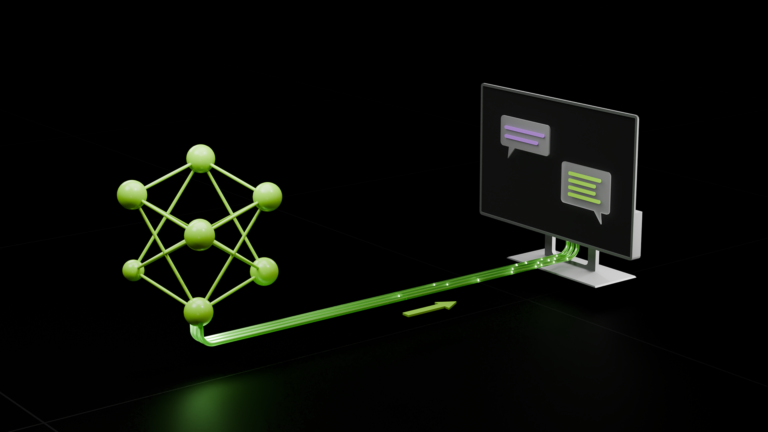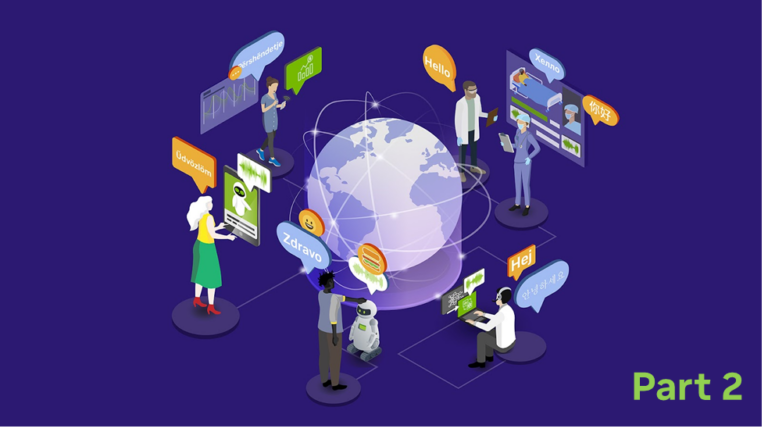Large language models that power generative AI are seeing intense innovation — models that handle multiple types of data such as text, image and sounds are becoming increasingly common. However, building and deploying these models remains challenging. Developers need a way to quickly experience and evaluate models to determine the best fit for their use
Read Article
 With free NVIDIA cloud credits, you can start testing the model at scale on the API Catalog.
With free NVIDIA cloud credits, you can start testing the model at scale on the API Catalog.
With free NVIDIA cloud credits, you can start testing the model at scale on the API Catalog.
The integration of AI has become pivotal in shaping the future of driving experiences. As vehicles transition into smart, connected entities, the demand for intuitive human-machine interfaces and advanced driver assistance systems has surged In this journey toward automotive intelligence, Cerence, a global leader in AI-powered mobility solutions, is tapping NVIDIA’s core expertise in automotive
Read Article
 NVIDIA today announced the latest release of NVIDIA TensorRT, an ecosystem of APIs for high-performance deep learning inference. TensorRT includes inference…
NVIDIA today announced the latest release of NVIDIA TensorRT, an ecosystem of APIs for high-performance deep learning inference. TensorRT includes inference…
NVIDIA today announced the latest release of NVIDIA TensorRT, an ecosystem of APIs for high-performance deep learning inference. TensorRT includes inference runtimes and model optimizations that deliver low latency and high throughput for production applications. This post outlines the key features and upgrades of this release, including easier installation, increased usability…
Following an announcement by Japan’s Ministry of Economy, Trade and Industry, NVIDIA will play a central role in developing the nation’s generative AI infrastructure as Japan seeks to capitalize on the technology’s economic potential and further develop its workforce. NVIDIA is collaborating with key digital infrastructure providers, including GMO Internet Group, Highreso, KDDI Corporation, RUTILEA,
Read Article
 At the recent World Governments Summit in Dubai, NVIDIA CEO Jensen Huang emphasized the importance of sovereign AI, which refers to a nation’s capability to…
At the recent World Governments Summit in Dubai, NVIDIA CEO Jensen Huang emphasized the importance of sovereign AI, which refers to a nation’s capability to…
At the recent World Governments Summit in Dubai, NVIDIA CEO Jensen Huang emphasized the importance of sovereign AI, which refers to a nation’s capability to develop and deploy AI technologies. Nations have started building regional large language models (LLMs) that codify their culture, history, and intelligence and serve their citizens with the benefits of generative AI.
 Neural machine translation (NMT) is an automatic task of translating a sequence of words from one language to another. In recent years, the development of…
Neural machine translation (NMT) is an automatic task of translating a sequence of words from one language to another. In recent years, the development of…
Neural machine translation (NMT) is an automatic task of translating a sequence of words from one language to another. In recent years, the development of attention-based transformer models has had a profound impact on complicated language modeling tasks, which predict the next upcoming token in the sentence. NMT is one of the typical instances. There are plenty of open-source NMT models…
 In the first post, we walked through the prerequisites for a neural machine translation example from English to Chinese, running the pretrained model with NeMo,…
In the first post, we walked through the prerequisites for a neural machine translation example from English to Chinese, running the pretrained model with NeMo,…
In the first post, we walked through the prerequisites for a neural machine translation example from English to Chinese, running the pretrained model with NeMo, and evaluating its performance. In this post, we walk you through curating a custom dataset and fine-tuning the model on that dataset. Custom data collection is crucial in model fine-tuning because it enables a model to adapt to…
Described as the largest system in the pharmaceutical industry, BioHive-2 at the Salt Lake City headquarters of Recursion debuts today at No. 35, up more than 100 spots from its predecessor on the latest TOP500 list of the world’s fastest supercomputers. The advance represents the company’s most recent effort to accelerate drug discovery with NVIDIA
Read Article
Driving a fundamental shift in the high-performance computing industry toward AI-powered systems, NVIDIA today announced nine new supercomputers worldwide are using NVIDIA Grace Hopper™ Superchips to speed scientific research and discovery. Combined, the systems deliver 200 exaflops, or 200 quintillion calculations per second, of energy-efficient AI processing power.
